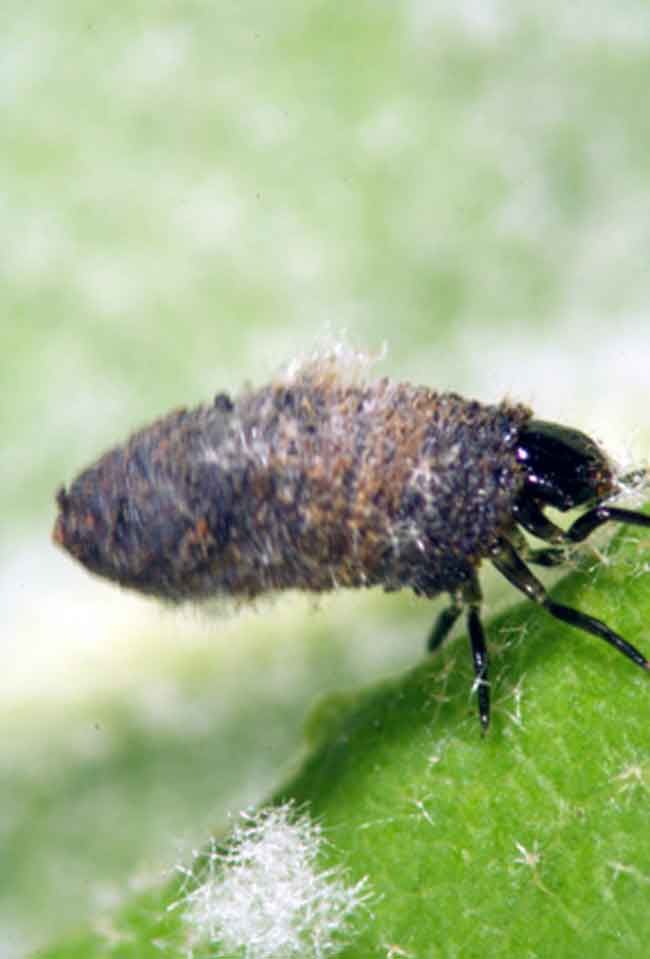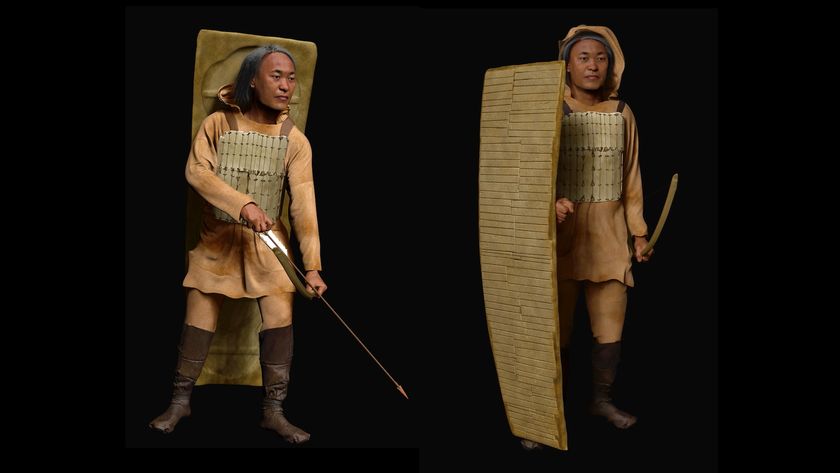Bug Wears Armor Made of Poo

A beetle apparently protects itself by constructing armor made from excrement, researchers now reveal.
Scientists investigated case-bearing leaf beetles, which are found worldwide. Females of these species typically construct bell-shaped receptacles made of feces around an egg immediately after they lay one.
"Specifically, they compress fragments of their feces into flat squarish plates using structures in their abdomen that are part of their genitalia," said researcher Daniel Funk, an evolutionary ecologist at Vanderbilt University in Nashville. "These plates are then added individually around the laid egg to form the egg case."
When the eggs hatch, the larvae cut off the roof of these cases, poking only their heads and legs out in order to move and feed. They never leave these cases when they are young, instead adding their own excrement to enlarge them and accommodate their growth. After they reach maturity, the adult beetles cut themselves free of their cases with their mandibles.
To discover what purpose these unusual structures might serve, the researchers exposed two species of these beetles, each only three to four millimeters long, to three kinds of predators, each with different attack strategies:
- The spined soldier bug, which uses its beaklike mouthparts to pierce victims and suck out their vital bodily fluids.
- The common house cricket, which possesses strong chewing mandibles.
- The green lynx spider, a sit-and-wait predator that injects digestive fluids into prey and then consumes it.
The experiments showed this fecal armor could successfully repel predators. Often the predators did not even investigate the potential meals, presumably because the beetles fooled them into believing they were just turds. As the researchers noted, while predators at times use feces to help track down prey, it seems unlikely most would expect potential victims to dwell within the excrement itself.
Even when the carnivores noticed the beetles, they often delayed in attacking them, giving the prey more chances at escape.
Sign up for the Live Science daily newsletter now
Get the world’s most fascinating discoveries delivered straight to your inbox.
"As the fecal matter the cases are composed of are formed by plant-eating beetles, the defensive chemicals created by the plant — think of chili peppers — to discourage herbivores may well be in the case as well," Funk speculated.
On the other hand, young leaf beetles stripped of their cases were most often immediately devoured.
The cases of one of the two species of beetles the researchers investigated look fuzzy because the insect, Neochlamisus platani, covers them with plant hairs from the sycamore leaves they feed on, adding significant extra protection against crickets. Such plant hairs might serve as extra camouflage, but they are also known to deter and sometimes even kill would-be herbivores. This species even makes a special chamber in its case packed with these hairs, which seemed to further reduce predator success.
"These complex cases demonstrate the enormous 'creativity' of nature via natural selection," Funk said.
Funk and his colleague Christopher Brown detailed their findings online Nov. 5 in the journal Animal Behavior.
- The World's Ugliest Animals
- 25 Amazing Ancient Beasts
- More Insect News and Information












